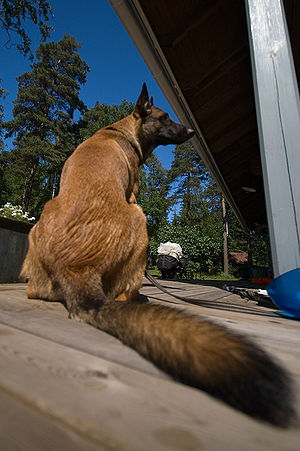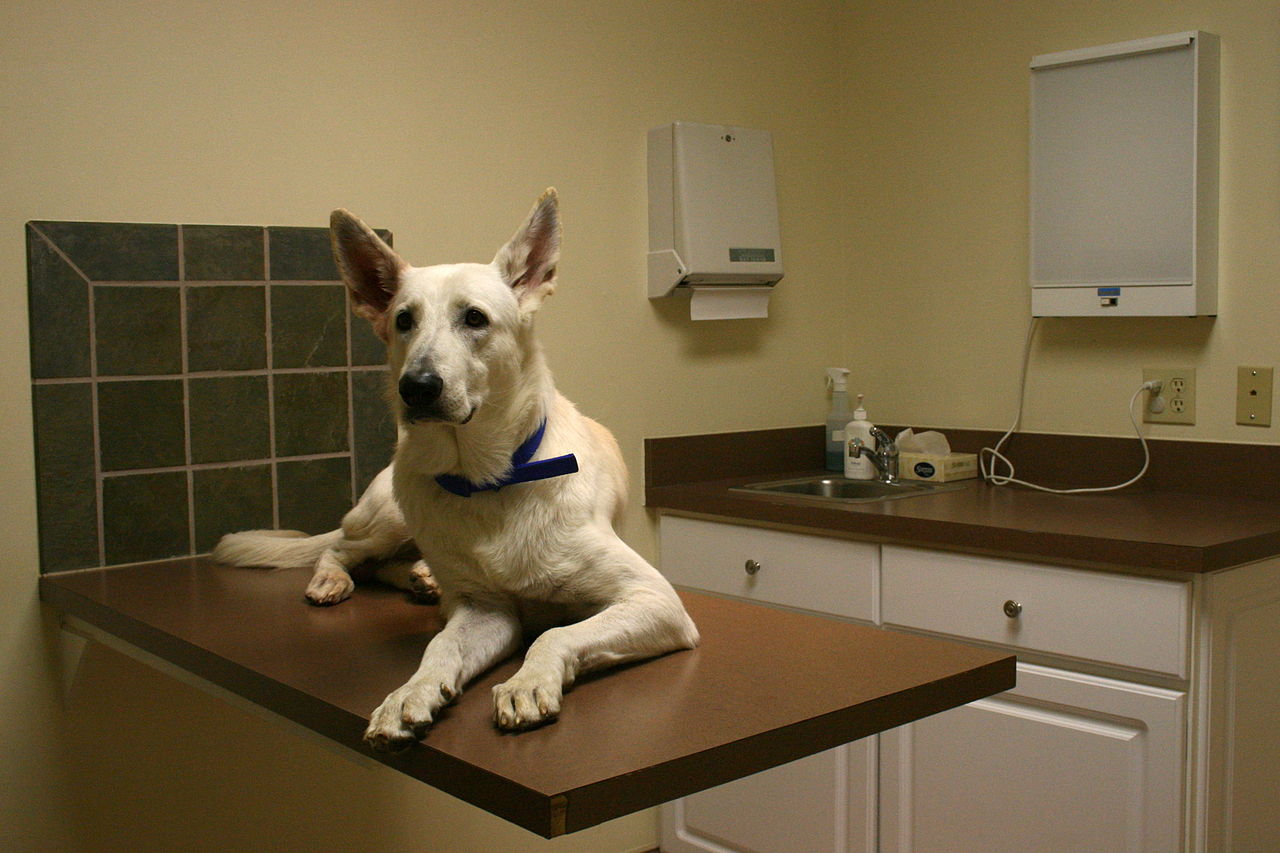
Limber Tail Syndrome has many names – acute caudal myopathy, cold water tail, broken tail, dead tail, broken wag,, limp tail, rudder tail.
Working and sporting dogs are more prone to this type of tail injury, but it can happen to any dog. Limber Tail can be very painful if it happens close to the base of the tail. The dog may have difficulty sitting or finding a comfortable position due to the pain. Other symptoms are a limp tail, holding the tail low or straight down, hair raised at the base of the tail.
Causes of this muscle injury can be overexertion, exposure to very cold water or cold and wet weather, extended confinement in a crate.
Some dogs are able to raise the tail slightly before letting it droop. If the injury is severe the dog may stop wagging its tail altogether.
Since the tail serves as a way of communicating a dog’s feelings, loss of its use can be upsetting not only to the dog, but to us as well.
Try to check the activities your dog takes part in when the tail appears injured. If you can discover the activity, curtailing will help prevent the syndrome.
Treatment may involve medicating with anti-inflammatories, but this is not always necessary and should only be prescribed by a veterinarian. The tail usually recovers within a week. However, if limber tail syndrome occurs often, your dog should be examined by the veterinarian.
A droopy tail can be an indication of other problems such as injuries or disease of the spine as the tail is an extension of the spine.
While limber tail syndrome is not life-threatening, any signs of a problem and the dog should be seen by your vet. After all, we would all miss that happy tail wagging.
Related Articles


